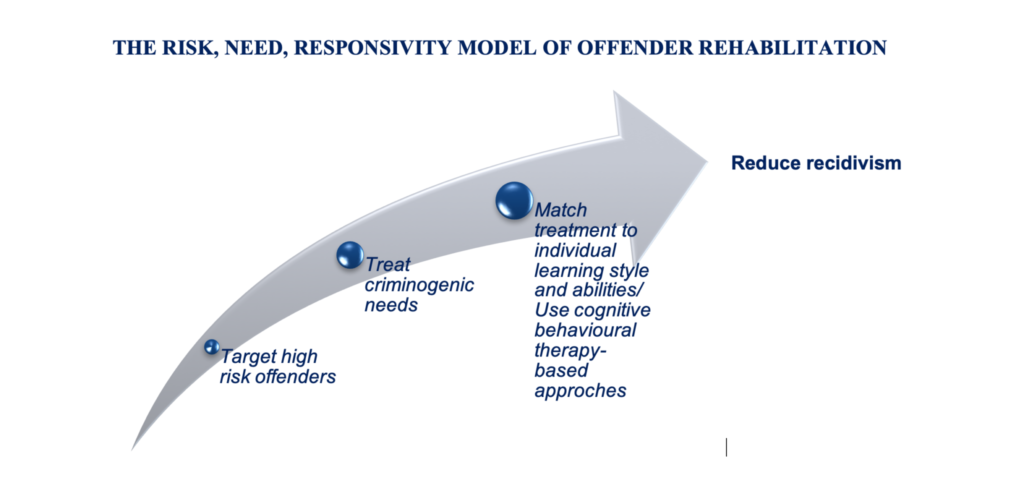Previous Article
News
“Krimstics”: Enhancing probation and parole officers’ therapeutic skills
The way in which probation and parole officers work with clients on supervision has changed profoundly in the Swedish Prison and Probation Service. Over the past five years, with the aim of increasing adherence to key principles of offender rehabilitation, a new model for structuring supervision practice and targeting offenders’ attitude and behaviour change has been nationally implemented and evaluated. From the organisational side, the implementation has been driven by the vision of modern probation practice, which is unified, credible and evidence-based.
An article by Dr. Louise Starfelt Sutton, research manager, research and evaluation unit of the Swedish Prison and Probation Service
Introducing “Krimstics” in the Swedish Probation and Parole Service
The staff training model Strategic Training Initiative in Community Supervision, in Sweden called Krimstics, is based on the principles of risk, need, and responsivity (Bonta & Andrews, 2017) and focuses on building and maintaining probation and parole officers’ therapeutic skills. At the core of Krimstics is the envisioned transition of the probation and parole officer from a case manager, who coordinates rehabilitative services, to a change agent, who actively works with clients’ behaviour change in supervision sessions. To reach this goal, the supervision period, normally 12 months, is structured around a series of stages:
- Assessing the client’s recidivism risk and treatment needs by using a structured risk-needs assessment tool;
- Building a collaborative relationship with the client;
- Establishing a common ground for working with attitude and behaviour change by introducing techniques based on cognitive behavioural therapy;
- Identifying and challenging pro-criminal attitudes and behaviours, and exploring pro-social alternatives.
Staff training focuses on teaching probation and parole officers skills and therapeutic techniques based on cognitive behavioural therapy. Krimstics aims to be responsive to the client’s learning style and abilities by using simple language, a clear structure and continuous report-building. There is also a commitment to the long-term maintenance and development of skills in Krimstics, with ongoing clinical support activities for probation and parole officers. These activities include monthly meetings and yearly refresher trainings to discuss and practice skills as well as formal clinical feedback.
Adherence to risk, need, and responsivity (RNR)
Between 2014 and 2017, more than 700 probation and parole officers were trained in Krimstics in Sweden and, in parallel, a systematic evaluation of the model’s implementation was conducted. The evaluation aimed to examine adherence to the principles of risk, need, and responsivity (RNR) as Krimstics was introduced. By collecting and analysing 545 audio-recordings of supervision sessions from 96 probation and parole officers over 2 years, the results consistently showed an increased quality in probation and parole officers’ interactions with their clients. These interactions became more structured, more relationship-focused and more therapeutic after probation and parole officers had received training and clinical support in Krimstics.
Challenges in adhering to RNR-principles were also identified. Although Krimstics-trained probation and parole officers more clearly focused on relevant treatment needs in their discussions with clients in supervision sessions, this effect was not maintained over time. Key therapeutic techniques showed relatively poor quality, despite improvements over time. Also, by examining the contact frequency between probation and parole services and clients with low, medium, or high recidivism risk over twelve months of supervision, it was clear that the intensity of contact was not differentiated according to the risk of reoffending. Overall, and in conflict with recommendations in the research literature, medium and high risk clients had a relatively low contact frequency. These challenges in adhering to RNR may hinder the model’s primary goal of reducing recidivism.

Where do we go from here?
Attitudes which support a criminal lifestyle are dynamic and amendable to change and are therefore appropriate targets in efforts to rehabilitate offenders. In Sweden, probation and parole officers have demonstrated positive changes in the way they interact with clients as the staff training model Krimstics has been implemented. The probation and parole service now has the task of identifying and challenging the barriers of initiating and maintaining intensive and extensive contact with high risk clients on supervision. Resources could, and should, be redirected from low risk clients. Also, opportunities for probation and parole officers to further develop and practice key therapeutic skills should be prioritised. Addressing these challenges will likely increase the potential for supervision practice to effectively promote clients’ behaviour change.

Related News
Keep up to date with the latest developments, stories, and updates on probation from across Europe and beyond. Find relevant news and insights shaping the field today.
New

Uncategorized
Newsletter December 2025 out now, featuring the 2026 CEP Activity calendar
18/12/2025
CEP’s latest newsletter is out now! Articles on the CoPPer Final Project Conference, New CEP report: The European Survey of Probation Staff’s Stress and Morale, and more.>> Read here
Reading corner

Criminal Justice
Bridging Research and Practice in Forensic Social Work: An interview with the editors of Forensic Social Work – Supporting Desistance
17/12/2025
Supporting desistance while managing risk is at the heart of criminal justice social work across Europe. In Forensic Social Work – Supporting Desistance, editors Jacqueline Bosker, Anneke Menger and Vivienne de Vogel bring together scientific insights and everyday professional practice to support those working with justice-involved individuals. In this interview, they reflect on the motivation behind the English edition of the book, its core themes, and how professionals can use its tools and approaches in their daily work.
New

Mental Health
Why some court-ordered psychiatric patients remain in prison in Europe
15/12/2025
There is an urgent yet insufficiently recognised human-rights and public-health crisis unfolding across Europe: the systematic imprisonment of mentally ill individuals who have already been assessed by courts or psychiatric professionals as requiring treatment in secure psychiatric hospitals rather than confinement in correctional facilities. Evidence indicates that structural failings—including bed shortages, procedural delays, and fragmented legal and administrative frameworks—have produced a situation in which thousands of vulnerable individuals remain in prison in direct contravention of judicial orders, clinical assessments, and international human-rights obligations. This constitutes a largely invisible mental-health scandal, obscured by inconsistent data collection, political sensitivities, and the general invisibility of people in custody.
New

Partners
Memorandum of Understanding Signed Between CEP and RESCALED
11/12/2025
On 10 December 2025, at the CEP Headquarters in Utrecht, CEP and RESCALED signed a Memorandum of Understanding (MoU) aimed at strengthening cooperation in areas of mutual interest. The MoU was signed by Rogier Elshout, Chair of Rescaled and Jana Špero Kamenjarin, CEP Secretary General, with the signing ceremony attended by Helen De Vos, Rescaled Executive Director and Daniel Danglades, CEP Vice-President.
Through this partnership, both organizations will work together to develop joint activities, exchange expertise, and support initiatives that advance their shared objectives.
This MoU reflects a commitment to transparent communication and the creation of new opportunities for joint projects and broader community impact.
New

Human rights and ethics
10 December – Human Rights Day
10/12/2025
CEP champions human rights because protecting dignity, fairness and equality is at the heart of effective probation. On 10 December, Human Rights Day, CEP celebrates the principle that everyone deserves respect and justice. Across Europe, CEP promotes social inclusion and supports the reintegration of people in contact with the criminal justice system. CEP strengthens community-based alternatives to imprisonment that reduce reoffending and build safer societies, advances professional and ethical probation practice, and connects practitioners, policymakers and researchers to share knowledge and promote humane justice. For CEP, justice is not only about punishment but also about opportunity, rehabilitation and respect for all.
Recap

CEP Events
Recap: First face-to-face meeting of the Expert Group Chairs
10/12/2025
On 9 December 2025, the CEP Office in Utrecht hosted the first face-to-face meeting of the Expert Group Chairs. The purpose of this meeting was to reintroduce the work of the Expert Groups and explore connections between work plans, opportunities for cooperation, and areas of common interest.
Subscribe to our bi-monthly email newsletter!
"*" indicates required fields
- Keep up to date with important probation developments and insights.

